Creating a Trophy Bass and Muskie Fishery in WV, Part 2
September 27th, 2013
Blog Series, Part 2: Fish Removal, Habitat Installation and Continuing Construction
Written by Industry Experts Aaron Cushing and David Beasley, Fisheries Biologists
We recently began working on another fun and exciting project, this time in southern West Virginia, helping to design a trophy fishery from start to finish. To take advantage of this and other unique opportunities we decided to share the story, showing each step in creating a healthy pond with a trophy fishery.
In Part 1, our Fisheries Biologists focused on resetting and redesigning the lake, through electrofishing and heavy construction.
Part 2: Things are moving along pretty quickly with the preparation and construction of our West Virginia trophy fishery and there were several new developments this past week. More steps were taken to prepare and expand the existing 5 acre main lake and combine with smaller ponds, creating one 15 acre water body. The new expanded portions of the lake wll be shallower, providing areas preferred by largemouth bass and tiger muskie (a sterile cross between northern pike and muskellunge).
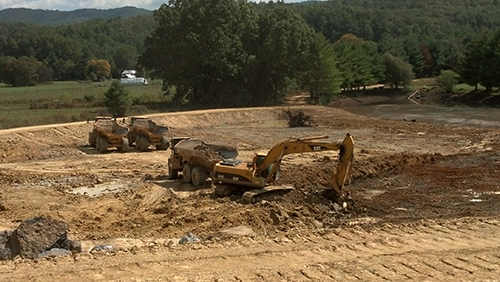
Following our first visit and an analysis of the present fish populations, the owner of the property decided to have us return to continue to electrofish and remove most of the old, small, and unwanted fish. We then drained the main lake and all the ponds to ensure a complete reset. This reset allows us to start over and set the stage for rapid fish growth in the new pond. Starting over is the single most significant step taken towards trophy fish management. Resetting the lake will actually cost less and take less time than fixing an older fishery, and the result is a much younger population of quality fish.
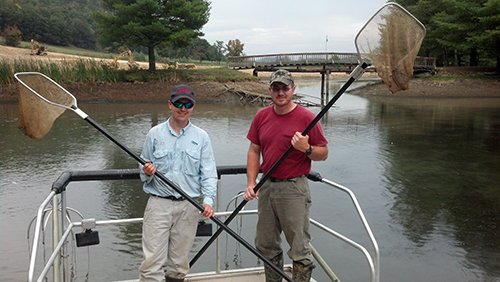
This week the assembly and installation of fish structure also began. Modern man-made cover fish attractors were used due to their safe use of recycled materials and long lasting life underwater. Units were installed first in areas of the main pond where their tops would be just below the surface, in about 6 feet of water.
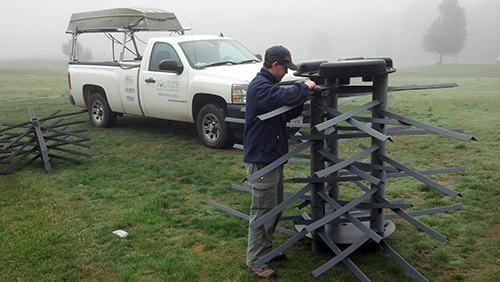
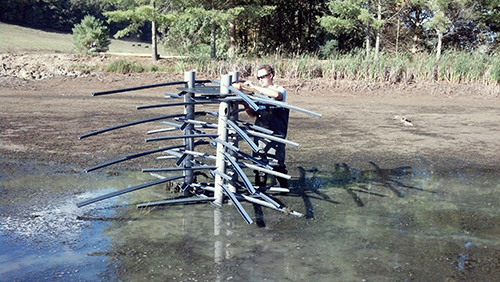
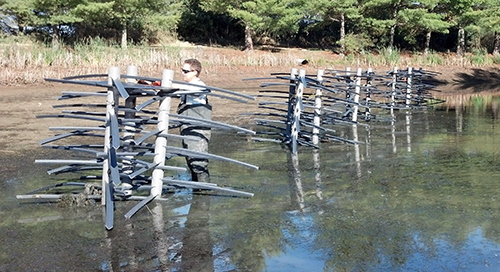
Once the deepwater structures were in place, installation began on some of the shallow dense units around the water’s edge. Many of these structures were placed close together, making it difficult for predator fish to penetrate while providing safe nursery areas and reefs for forage fish such as fathead minnows and juvenile bluegill. Having proper habitat required by the fish species within the water body is critical to the balance of the ecosystem. Without the proper habitat fish populations have difficulty staying balanced and fish growth is often poor.
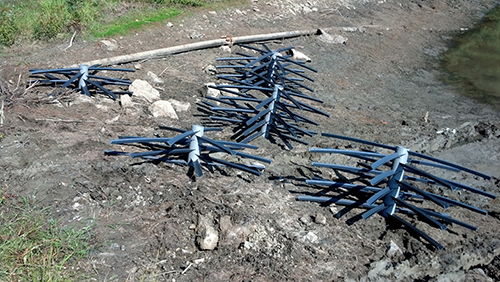
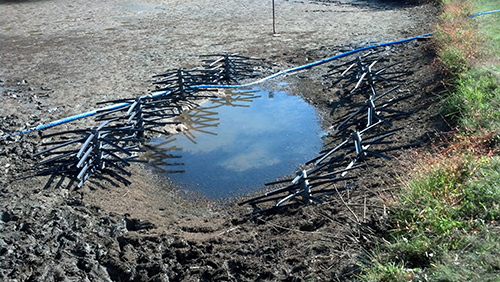
With all that has happened so far, these are just the baseline steps needed to create a trophy fishery. There is still much more to come in the following weeks and months!
Learn more about SOLitude Lake Management’s fisheries biologists, David Beasley and Aaron Cushing, as they take us on incredible journeys of creating trophy fisheries for our clients throughout the Eastern United States.
Contact the experts at 888-480-5253 for all of your lake, pond and fisheries management needs.
Since 1998, SOLitude Lake Management has been committed to providing full service lake and pond management services that improve water quality, preserve natural resources, and reduce our environmental footprint. Services are available throughout the Eastern United States. Fisheries management consulting and aquatic products are available nationwide. Learn more about SOLitude Lake Management and purchase products at www.solitudelakemanagement.com.










